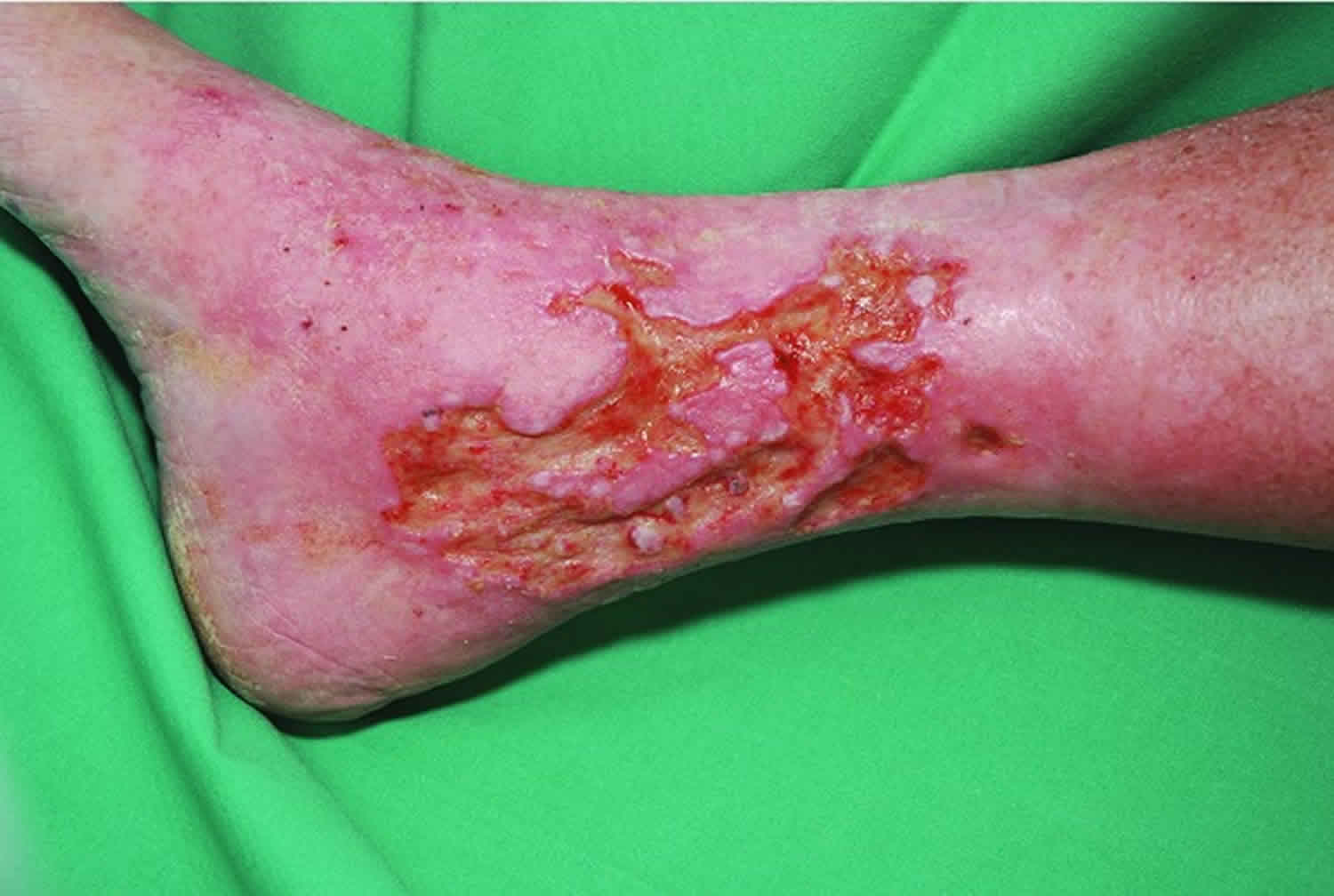How to care for venous ulcers?
Venous ulcers (open sores) can occur when the veins in your legs do not push blood back up to your heart as well as they should. Blood backs up in the veins, building up pressure. If not treated, increased pressure and excess fluid in the affected area can cause an open sore to form.

Venous ulcers most often form around the ankles
1. Causes and symptoms of venous ulcers
Venous ulcers typically occur because of damage to the valves inside the leg veins. These valves control the blood pressure inside the veins. They allow it to drop when you walk. If the blood pressure inside your leg veins doesn't fall as you're walking, the condition is called sustained venous hypertension. That increase in blood pressure causes ulcers to form on your ankles.
When blood pools in the veins of the lower leg, fluid and blood cells leak out into the skin and other tissues. This can cause itchy, thin skin and lead to skin changes called stasis dermatitis. This is an early sign of venous insufficiency.
Early signs include:
- Leg swelling, heaviness, and cramping
- Dark red, purple, brown, hardened skin (this is a sign that blood is pooling)
- Itching and tingling
Signs and symptoms of venous ulcers include:
- Shallow sore with a red base, sometimes covered by yellow tissue
- Unevenly shaped borders
- Surrounding skin may be shiny, tight, warm or hot, and discolored
- Leg pain
- If the sore becomes infected, it may have a bad odor and pus may drain from the wound
2. Self-care instructions for venous ulcers
Venous ulcers need proper care and treatment to prevent infection and to heal. It's important to have any venous ulcers checked right away by your doctor.
Treatment may require focusing on the circulatory or vein problems that are causing the ulcers. Or it may mean removing some tissue around the wound. You may be asked to:
- Clean the wound regularly
- Apply a dressing to the ulcer
- Avoid products that cause skin sensitivity
- Wear compression stockings to prevent blood from pooling in the legs and to speed healing
- Apply an antibacterial ointment or another topical medicine to prevent or treat an infection
- You can use Multidex topical for shallow or deep ulcers, with or without infection. Multidex contains Maltodextrin ingredient to help fill, dry sores, control odor, drain pus, help ulcers heal faster.
To help treat a venous ulcer, the high pressure in the leg veins needs to be relieved:
- Wear compression stockings or bandages every day as instructed. They help prevent blood from pooling, reduce swelling, help with healing, and reduce pain.
- Put your feet above your heart as often as possible. For example, you can lie down with your feet propped up on pillows.
- Take a walk or exercise every day. Being active helps improve blood flow.
- Take medicines as directed to help with healing.
In summary, if you are at risk for venous ulcers, follow the steps listed above in wound care. Also, check your feet and legs every day: upper and lower, ankles and heels. Look for cracks and changes in skin color, early detection and treatment will help wounds heal faster.

Image of foot ulcer has been reduced after using Multidex for more than 1 week.